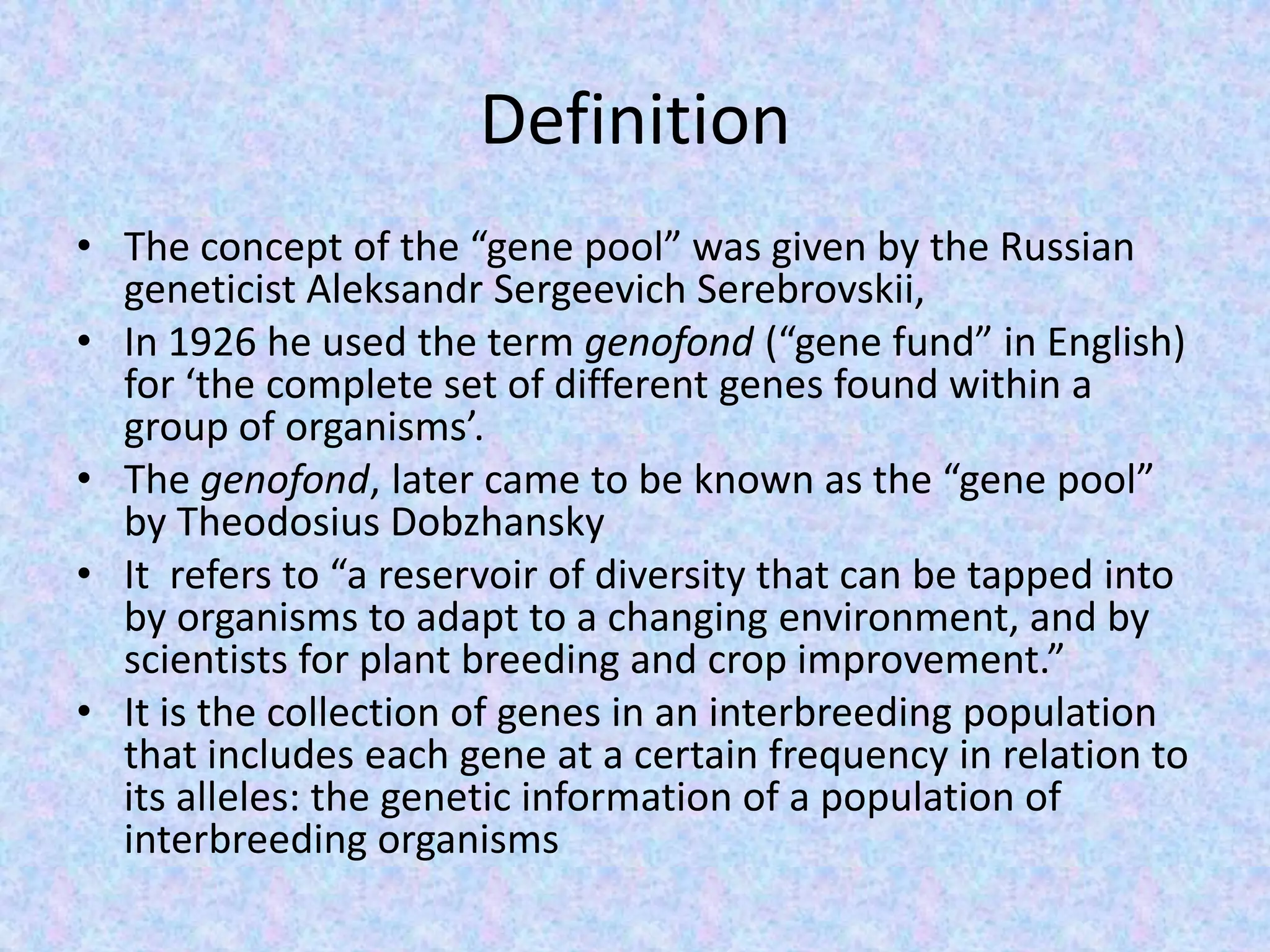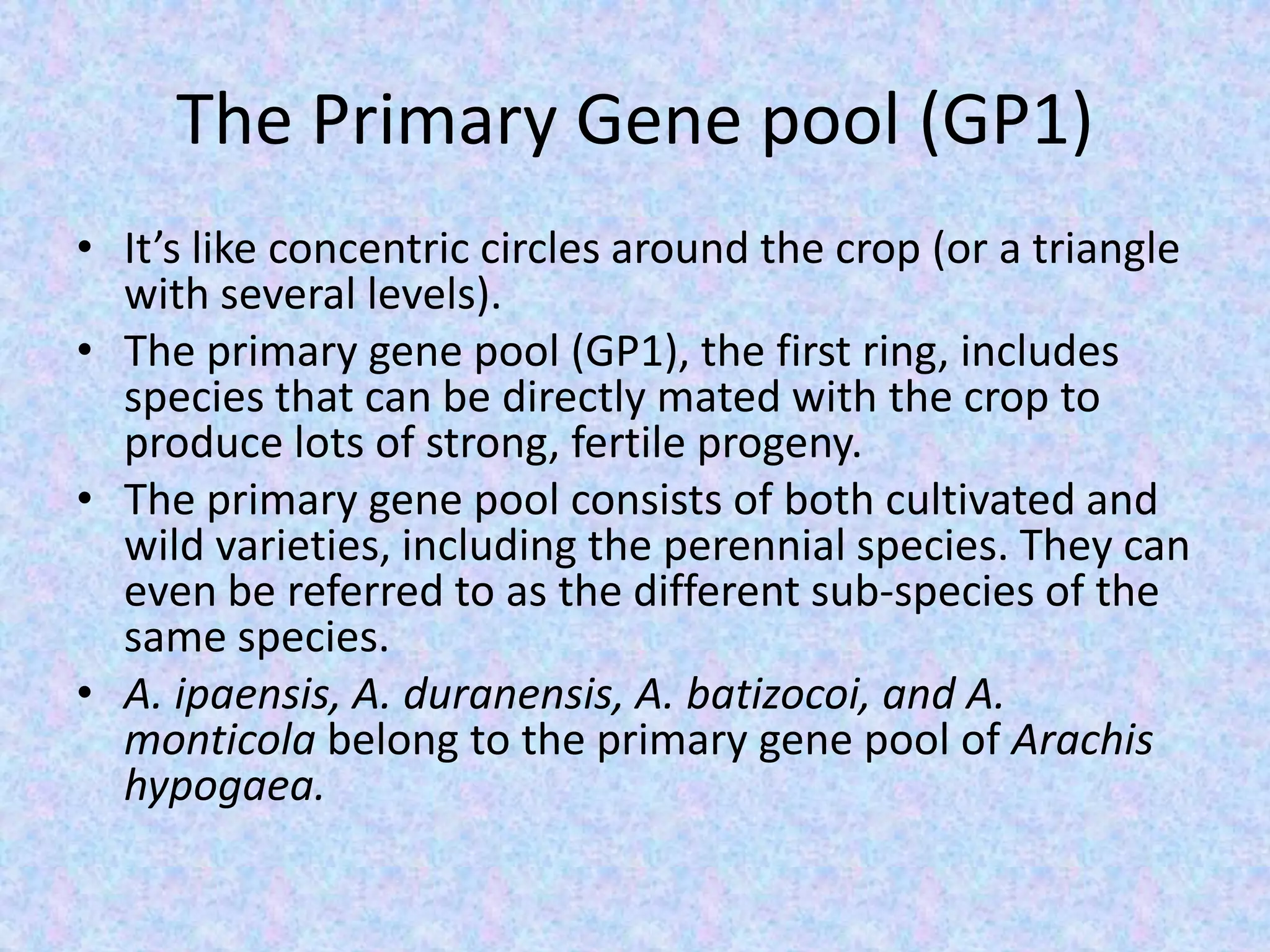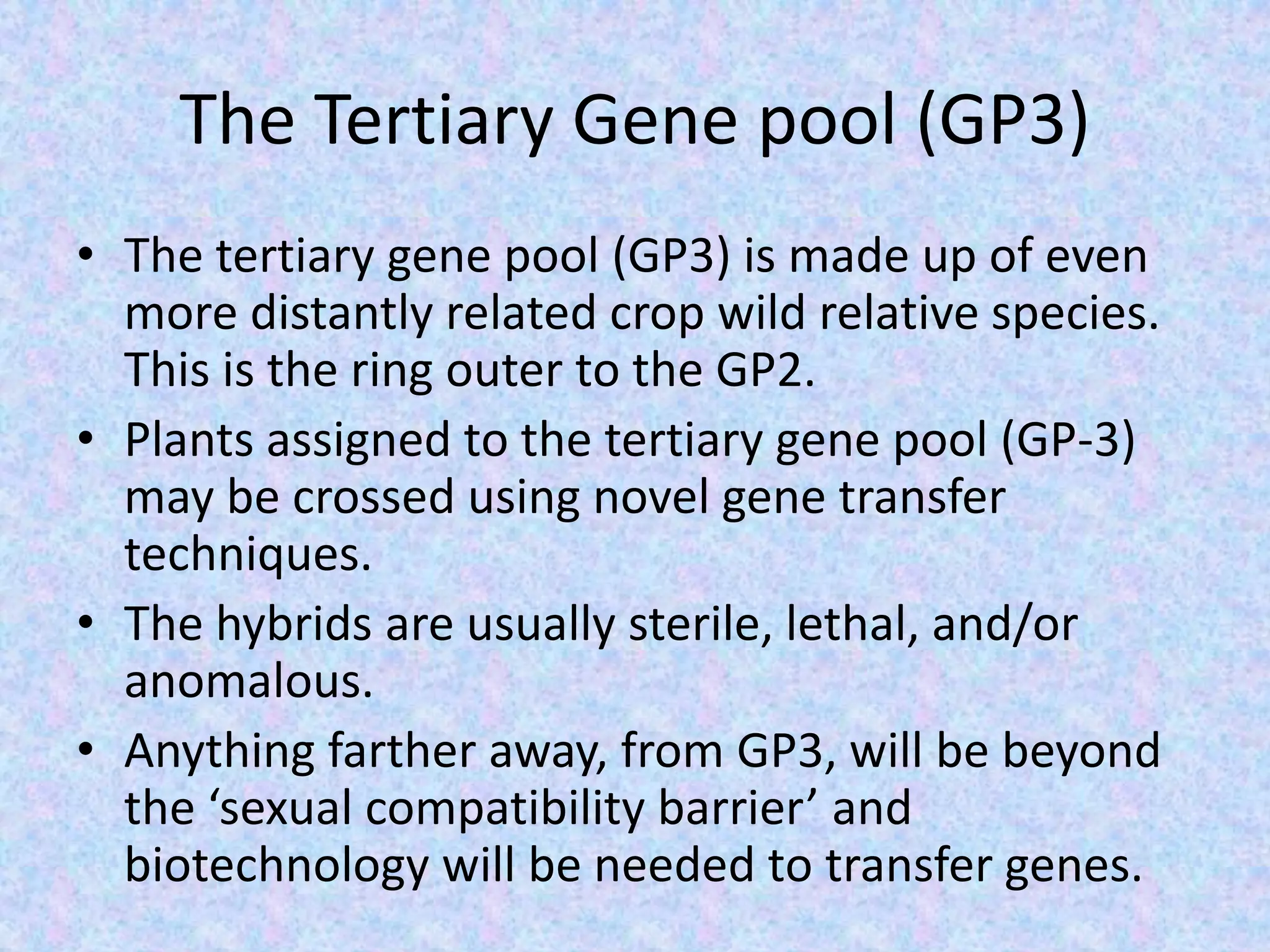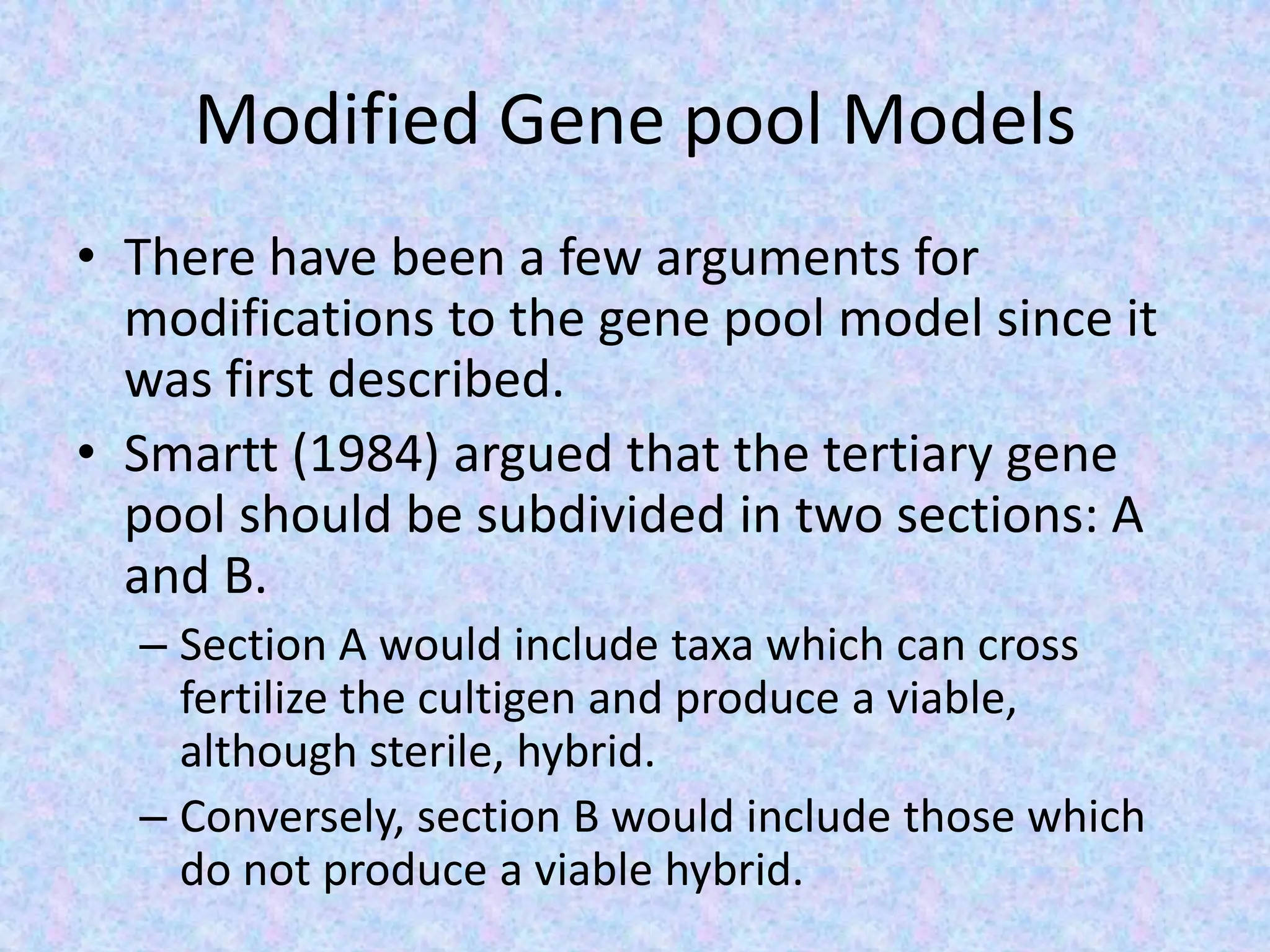The document discusses the concept of gene pools, defined as the complete set of different genes within a group of organisms, crucial for adaptation and crop improvement. It explains the classification of gene pools into primary, secondary, and tertiary categories based on how easily they can exchange genes with cultivated species, highlighting challenges in breeding. Additionally, the document touches on modifications to the gene pool model, including the proposal of a fourth gene pool for genetically engineered plants.

![The Concept of Gene pool
[For Breeding Purpose]
The Harlan and deWet Gene pool Concept](https://image.slidesharecdn.com/genepoolconceptforbreedingpurpose-200522115437/75/Gene-pool-concept-for-breeding-purpose-2-2048.jpg)










